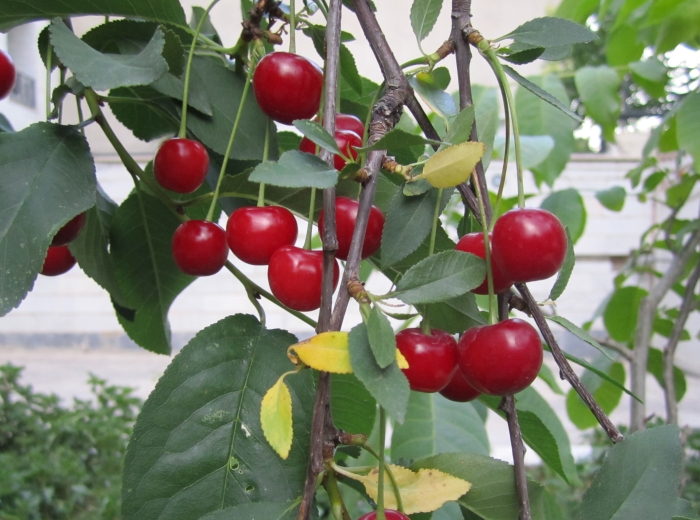Sour Cherry
(Prunus cerasus)
Sour Cherry (Prunus cerasus)
/
/

Diako1971
CC BY-SA 4.0














































































Estimated Native Range
Summary
Sour Cherry is valued for its attractive spring blossoms and edible fruit, which has numerous culinary uses. It is commonly used in orchards for fruit production and in gardens as an ornamental plant. The fruit is rich in antioxidants and is used in a variety of dishes, including soups, pork dishes, cakes, tarts, and pies. This species prefers full sun but can tolerate part shade. It requires well-drained soils and is adaptable to a range of soil types, from clay to loam. While it has medium water requirements, it is somewhat drought tolerant once established. Sour Cherry can be susceptible to pests and diseases such as cherry leaf spot and aphids. It is also potentially invasive in some regions, so gardeners should consult local guidelines before planting.CC BY-SA 4.0
Plant Description
- Plant Type: Tree, Shrub
- Height: 12-18 feet
- Width: 15-20 feet
- Growth Rate: Slow
- Flower Color: Pink, White
- Flowering Season: Spring
- Leaf Retention: Deciduous
Growth Requirements
- Sun: Full Sun
- Water: Medium
- Drainage: Slow, Medium, Fast
Common Uses
Bee Garden, Bird Garden, Butterfly Garden, Edible*Disclaimer: Easyscape's listed plant edibility is for informational use. Always verify the safety and proper identification of any plant before consumption., Fragrant, Rabbit Resistant, Showy Flowers
Natural Habitat
native to temperate regions of Europe and southwest Asia, including the North Caucasus
Other Names
Common Names: Morello Cherry, Pie Cherry, Tart Cherry, Dwarf Cherry, Amarelle Cherry, Sur-Kirsebær, Surkirsebær, Sauerkirsche, Sauerkirschenbaum, Weichsel
Scientific Names: , Prunus cerasus, Prunus pendula, Prunus vulgaris, Cerasus vulgaris, Prunus rosea, Prunus cerasus subsp. acida, Prunus semperflorens, Prunus acida, Prunus cerasus var. semperflorens
GBIF Accepted Name: Prunus cerasus L.